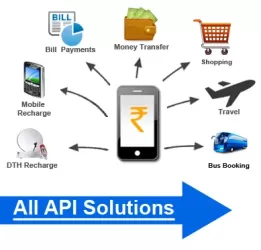
Hotel API Integration
Hotel
APIs (Application Programming Interfaces) allow you to connect your
application, website, or system with the databases and services of hotels or
booking platforms. This integration enables you to access various hotel-related
data, such as room availability, rates, booking information, and more.
Here's a
general outline of the steps involved in integrating with a hotel API:
1.
**Research and Choose an API**: Start by researching different hotel
APIs available in the market. Popular ones include the APIs provided by major
booking platforms like Booking.com, Expedia, Airbnb, and more. Choose an API
that fits your needs in terms of the data you want to access and the
functionalities you want to offer to your users.
2.
**Obtain API Access**: To use a hotel API, you typically need to sign up
for an account on the provider's developer portal. This might involve creating
an application, getting API keys, and agreeing to their terms of use.
3.
**Understand API Documentation**: Every API comes with detailed documentation
that explains how to make requests, what endpoints are available, the required
parameters, and the expected responses. Familiarize yourself with this
documentation to understand how to interact with the API.
4.
**Authentication**: Most APIs require authentication to ensure only
authorized users can access the data. Common authentication methods include API
keys, OAuth tokens, or other forms of secure tokens.
5. **API
Requests**: Use programming languages like Python, Java, or JavaScript
to make HTTP requests to the API's endpoints. These requests will fetch data
such as hotel details, room availability, rates, images, etc.
6.
**Response Handling**: Once you make a request, the API will respond
with data in a structured format like JSON or XML. Your application needs to
parse and process this data to present it to users in a user-friendly way.
7.
**Error Handling**: Implement error handling to manage situations where
the API doesn't respond as expected. This could include handling rate limits,
server errors, or incorrect parameters.
8. **Data
Presentation**: After retrieving data from the API, you can present it
on your application or website. This could involve creating search interfaces,
listing available rooms, showing images, and providing booking options.
9.
**Booking Process**: If your integration allows users to book rooms,
you'll need to create a process for submitting booking requests to the API and
receiving confirmation or reservation details.
10.
**Testing**: Thoroughly test your integration in various scenarios to
make sure it works as expected. Test different types of requests, handle edge
cases, and ensure the data you display to users is accurate.
11.
**Security and Privacy**: Ensure that you handle user data securely and
follow best practices for data protection and privacy, especially if you're
dealing with personal information during the booking process.
Remember that each hotel API might have its own specific
requirements and features, so it's important to carefully review the
documentation provided by the API provider. Additionally, as of my last
knowledge update in September 2021, the details might have changed, so I
recommend checking the latest documentation from the API provider for the most
up-to-date information.



.jpeg)


















